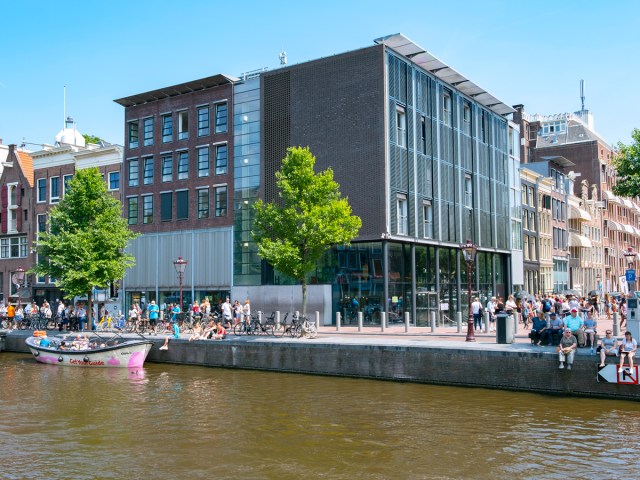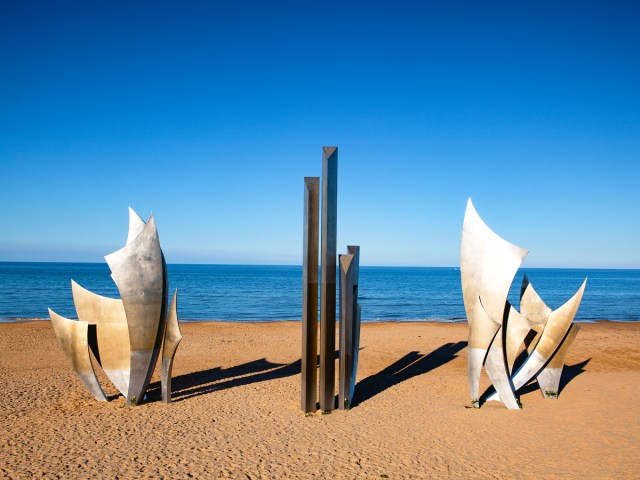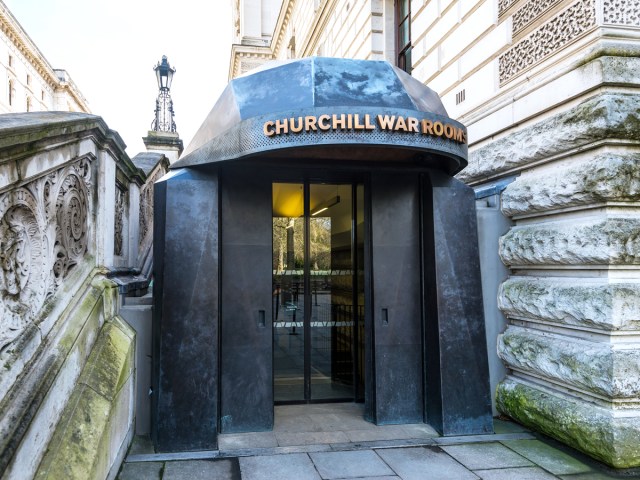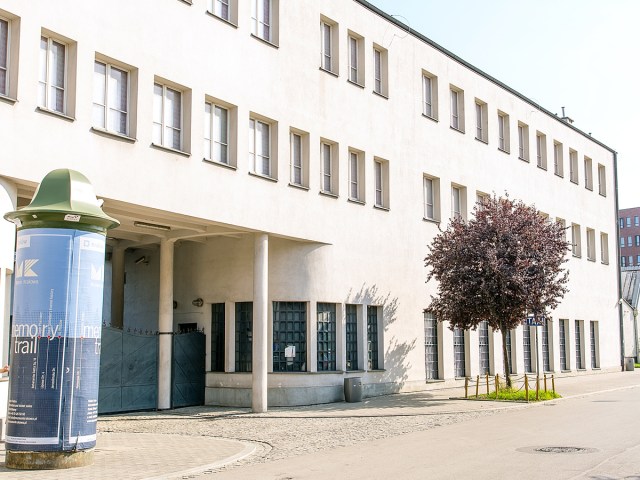Even after all this time, World War II continues to fascinate us. Perhaps it’s because we can never truly escape our history — 80 years later, we can still see the many ways the Second World War changed the course of the 20th century. From battle sites to secret hiding spots, these five sites in Europe have more in common than just World War II. They all tell the stories of the people who lived — and those who died — during an unprecedented time in global history, making each of them an essential visit.
Anne Frank House – Amsterdam, The Netherlands

One of the most unexpected figures to emerge from World War II was a 13-year-old Jewish girl from Amsterdam named Anne Frank. As she spent two years hiding from the Nazis in a secret annex of her family home, Frank wrote down her thoughts, feelings, and the stories of her everyday life in a diary. Although Frank and her family were discovered by the Nazis, with all but her father dying in the concentration camps, Anne’s diary was saved and later published in 1947. A testament to the horrors of World War II, Anne Frank: Diary of a Young Girl is one of the most widely read books in the world.
Behind a movable bookcase, the secret annex remains intact today, with visitors allowed access to the space where a young Anne lived, wrote, and was eventually discovered by the Nazis. The Anne Frank House and museum contains artifacts, personal items, and stories of the Holocaust and World War II. As it’s one of the more popular sites in Amsterdam, tickets to see the Anne Frank House must be purchased in advance.
Auschwitz – Poland

Auschwitz is one of the more sobering World War II sites to visit, but also one of the most important. Located 40 miles outside Krakow, Auschwitz was one of the largest concentration camps in Europe. Between 1940 and 1945, 1.3 million Jewish people and others who were perceived as threats to the Nazi regime were shipped to the extermination camp, and 1.1 million of them died.
Separated into two sections, Auschwitz and Auschwitz-Birkenau, the former camp has been converted into a museum. At Auschwitz, visitors can witness the barracks where prisoners lived, view exhibits that contain their personal belongings, and learn more about the horrors that occurred there through stories and historical displays. Two miles away is Auschwitz-Birkenau, the site of the gas chambers and mass exterminations. Although admission is free, guided tours are encouraged and must be booked in advance.
Omaha Beach and Normandy American Cemetery – Normandy, France

On June 6, 1944, American troops stormed the beaches of Normandy in what would eventually become known as D-Day. Of the five beaches that U.S. troops landed on, Omaha Beach hosted one of the bloodiest battles. Facing a heavily fortified German defense and rough seas, Americans suffered significant casualties, with roughly 2,400 soldiers killed, wounded, or missing. However, the U.S. 1st and 29th Infantry Divisions ultimately prevailed, a heroic act that helped Allied troops win the war.
Today, the beach is marked by a massive sculpture, Les Braves, which was installed on the 60th anniversary of D-Day to commemorate the lives of those lost. Not far from Omaha Beach, many of the U.S. soldiers who gave their lives are buried in the Normandy American Cemetery overlooking the sea and marked by white crosses in neat graves. Nearly 9,000 American soldiers are interred here, with a wall to remember the 1,500 men who were reported missing in action.
Churchill War Rooms – London, England

Battles might have been fought in France, Russia, and Germany, but London played a decisive role in the war. Within the secret chambers of the Churchill War Room, Winston Churchill led a tactical war that secured an eventual victory for the Allied troops. In these underground rooms beneath Westminster, Britain’s top leaders, including King George VI, secretly devised ways to defeat the German troops. As prime minister, Churchill was so devoted to the cause that he occasionally even slept in the underground complex.
Today, these subterranean rooms have remained frozen in time since 1945. One of the highlights is the map room, a critical meeting space used to strategize the movement of troops. The space also contains bunkers, which housed citizens during the bombing of the Blitz, and the cabinet room, where top British officials met in secret. The adjoining Churchill Museum offers guided and self-guided tours.
Schindler’s Factory – Krakow, Poland

Located in the Podgórze district, part of Krakow’s Jewish ghetto during World War II, the Schindler Factory was owned and operated by Oskar Schindler, a member of the Nazi Party. In 1939, Schindler acquired the enamelware factory from Jewish owners and began supervising over 1,000 Jewish employees. Although he was initially interested in making a profit, he eventually sympathized with the plight of his Jewish employees and used his privilege to move them to a safer factory, thus saving over 1,000 lives.
Made famous by the award-winning 1993 film Schindler’s List, Schindler’s Factory is particularly fascinating to visit because it was never destroyed by the war. Since the enamelware factory eventually produced ammunition, it was crucial to Nazi war efforts. Today it contains the Krakow Historical Museum, where visitors can learn more about the Nazi occupation, with exhibits including re-creations of the Jewish ghetto, personal stories of factory workers, and artifacts from the war. Schindler’s original desk has also been preserved, alongside enamel pots engraved with the names of the lives he saved.
More from our network
Daily Passport is part of Inbox Studio, which publishes content that uplifts, informs, and inspires.

















